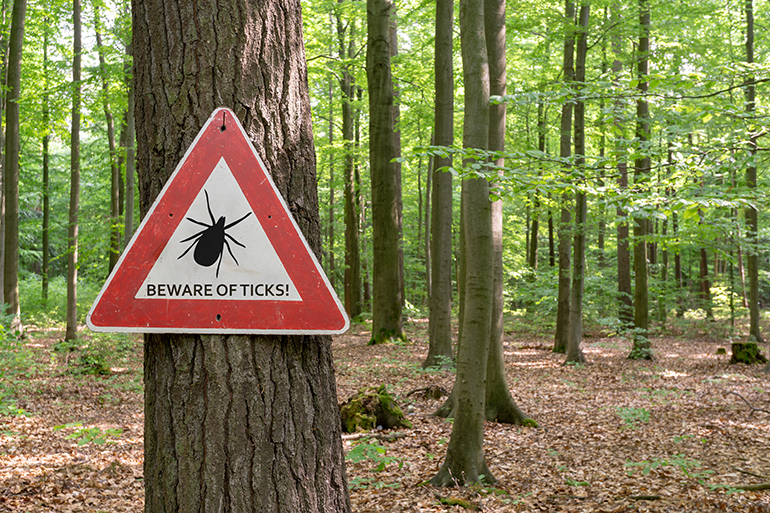Summer Is Gone, But Ticks Most Certainly Are Not

Ticks bug everyone, and because of the diseases they carry, they are a real threat to humans and our health. Most people believe ticks are only active in the late spring, summer and early fall, but ticks are finding hosts and are actually active all year round, whenever the temperature is above 40 degrees. (East End Tick and Mosquito Control has begun treating many properties for year-round tick protection, performing traditional spray programs every four weeks from April to November, installing Tick Tubes in the spring and fall, and performing granular tick treatments in December and March, creating a year-round integrated tick control program that works.)
Climate plays a big role when it comes to the tick population—some years are much worse for ticks than others, like the summer we just experienced—and can determine how active ticks will be in the later months. For example, ticks thrive in humidity, and a wet year can boost tick populations and increase the number of places where they reside in. A warm winter can add weeks of activity for the animals ticks feed on, which causes them to spread to areas where humans are, increasing the threat to our heath.
Warm winter days make ticks a year-round problem in the northeast. Some of the more prevalent ticks in the northeast are the Deer Tick (blacklegged tick), Brown Dog Tick, American Dog Tick, Lone Star Tick and the new Asian Long Horned Tick. Forecasters predicted that this year tick population would be larger than usual, and here on Long Island they predicted correctly. Forecasters saw that this spring and summer temperatures were expected to be around the regional average, and more precipitation was anticipated, which later caused tick populations to be above average.
When preparing for the 2020 tick season, it’s important to think about ticks on those warm winter days. Weather affects the tick population because of the role it plays in a tick’s reproductive cycle, so it’s important to keep the forecast in mind. A female tick is only able to lay eggs in a wet, warm environment, and once the egg hatches the new tick will need to feed off a host for every step of its development. A humid environment is essential for ticks to reproduce, and a wet winter and an early spring can cause female ticks to lay more eggs than usual. Weather later becomes a factor largely because of the effect it has on tick hosts such as mice, deer and other animals. If the mouse population increases, tick larvae and nymphs will have an easier time finding hosts and will make it easier to go onto the next stage of their development. Summer and fall months that are warmer than usual will make the hosts more active and increase the likelihood that ticks will be carried into areas that humans are in, making it easier to latch onto you. Be prepared!



